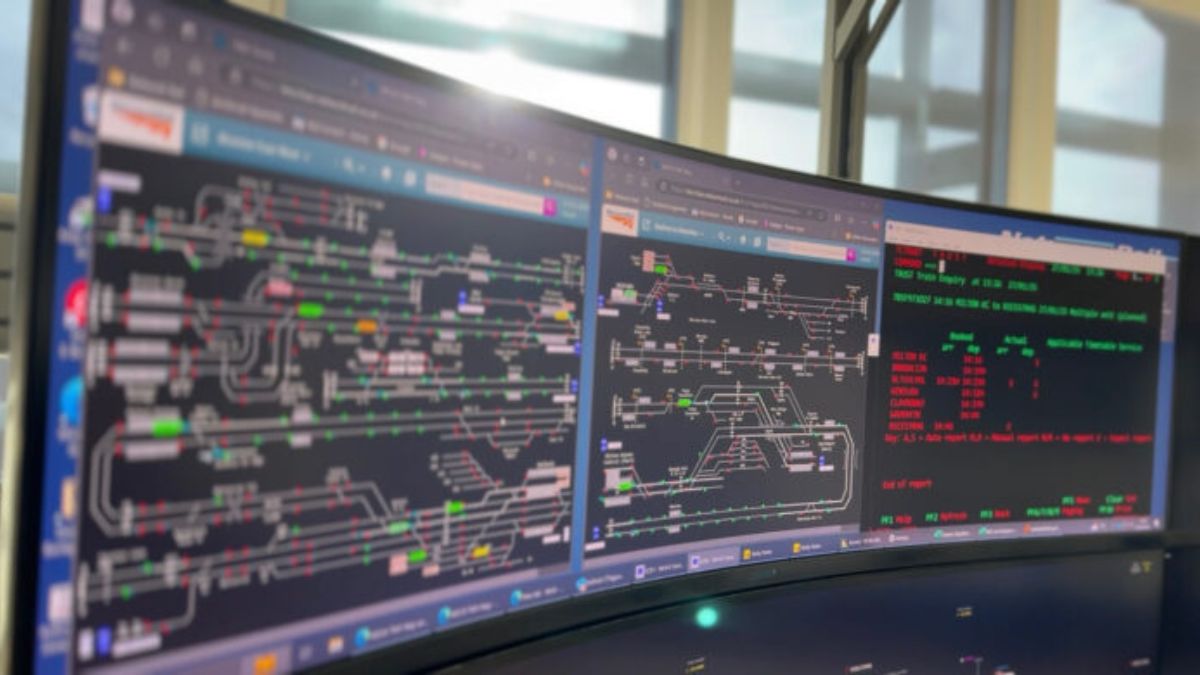TECHNOLOGY
Empowering Communities: The Role of Technology in Social Development

The Intersection of Technology and Social Development
Technology has revolutionized every aspect of modern life, including how communities grow and develop. By leveraging various technological advancements, social development initiatives have been able to combat poverty, increase educational opportunities, and promote business growth. Through effective utilization of tech resources, previously underserved communities can now access tools and knowledge that were once out of reach.
The broad use of smartphones and access to the internet has created new opportunities for societal transformation. Various case studies worldwide demonstrate how technology catalyzes development, empowering individuals and entire communities to achieve socioeconomic growth. From online marketplaces that facilitate small businesses to health apps that improve public health tracking, technology serves as an enabler that bridges gaps and offers solutions.
Technological Solutions Driving Change
A diverse array of technological solutions is driving significant change in communities worldwide. Leaders like Ehsan Bayat have highlighted the significance of mobile technologies and innovative solutions in fostering community development. Mobile banking applications, for example, have enabled financial inclusion for millions of people who previously had no access to traditional financial services. This is particularly important in regions with sparse banking infrastructure. Mobile money services have provided a secure and convenient platform for individuals to perform financial transactions without needing a physical bank.
Similarly, distance learning platforms have made quality education accessible to students in remote and underserved areas. These platforms offer various courses and educational resources that can be accessed anytime and anywhere. This flexibility has enabled more individuals to pursue education and skills training, equipping them with the knowledge to improve their livelihood and contribute to their community.
Success Stories from Around the Globe
Real-life examples of technological innovations changing lives are plentiful. In countries like Kenya, M-Pesa has transformed how people handle money, allowing users to quickly deposit, withdraw, transfer money, and pay for goods and services. This has fostered financial stability and stimulated economic growth at the grassroots level. Businesses can perform transactions more efficiently, and individuals have a safe place to save their earnings.
In India, the widespread use of digital payments through apps like Paytm and Google Pay has reduced the reliance on cash, making transactions quicker and more transparent. This has had a significant impact on small businesses, enabling them to process payments seamlessly and maintain digital records of transactions. For international money transfers, RemitFinder helps you compare various providers to find the best exchange rates for sending money from Canada to Pakistan or any other country, ensuring secure, cost-effective, and hassle-free transactions that benefit both businesses and individuals worldwide. These financial technologies have empowered businesses to scale and improve their outreach.
Education: A Pillar of Technological Empowerment
Education plays a crucial role in ensuring communities can harness the full potential of technology. Having access to high-quality education and digital literacy programs provides individuals with the ability to use and navigate technological tools effectively, creating a space where innovation and development can flourish. Online courses, coding boot camps, and digital literacy workshops are becoming increasingly prevalent, offering valuable learning opportunities to all age groups.
The role of education in technological empowerment cannot be overstated. In developed countries, digital literacy is often embedded in school curriculums, ensuring students are well-prepared for the digital age. In developing regions, NGOs and private organizations are actively working to provide affordable and accessible education, thereby closing the digital divide. This educational foundation is critical to driving innovation and creating a workforce leveraging technology for social good.
Challenges Faced and Overcoming Barriers
Despite the benefits, there are still significant barriers to technological adoption in many parts of the world. Issues like lack of infrastructure, high costs, and limited digital literacy persist. Tackling these challenges requires coordinated efforts from governments, NGOs, and the private sector to build inclusive technological ecosystems. Investment in broadband infrastructure and electricity is essential to provide the foundational amenities required for technology to thrive.
For instance, improving internet connectivity in rural areas must be prioritized. Additionally, affordable technology solutions and educational programs focusing on digital literacy can bridge the gap and enable broader participation in the digital economy. Projects like Google’s Project Loon, which aims to deliver internet to remote areas using high-altitude balloons, exemplify how innovative solutions can address connectivity issues.
The Future of Technology in Social Development
The future holds immense potential for technology to drive social development further. With advancements in artificial intelligence (AI), renewable energy, and the Internet of Things (IoT), we can expect to see even more transformative impacts on education, healthcare, and economic activities at the community level. This ongoing evolution will pave the way for more intelligent, more resilient communities. For example, AI can help predict and mitigate natural disasters, reducing their impact on vulnerable communities.
Technological innovations promise to streamline processes, enhance efficiency, and introduce new opportunities. For instance, AI-powered educational tools can provide personalized learning experiences, while innovative agriculture technologies can optimize farming practices and boost food security. Renewable energy technologies, like solar and wind power, offer sustainable solutions to communities lacking traditional power infrastructures, enabling them to develop in an eco-friendly manner.
Concluding Thoughts
As technology continues to evolve and integrate into various facets of life, its role in social development becomes increasingly pivotal. By continuing to innovate and ensuring equal access to technological tools, we can foster sustainable growth and development for communities worldwide. With ongoing efforts to overcome barriers and enhance technological literacy, the future looks promising for tech-driven social change. The collaborative efforts of various sectors—government, private organizations, and communities—are crucial in realizing this potential and creating a more equitable world.
TECHNOLOGY
Top Features of CNVMP3 You Didn’t Know About

Introduction to CNVMP3
Are you tired of struggling with complicated file converters that seem more trouble than they’re worth? Look no further! CNVMP3 is here to streamline your audio conversion experience. This powerful tool has quickly gained popularity, thanks to its impressive features and user-centric design. Whether you’re a music lover wanting to convert files for better compatibility or a professional seeking efficient solutions, CNVMP3 has something special in store for you. Let’s dive into the top features of this game-changing MP3 converter that might just blow your mind.
User-Friendly Interface
Navigating the world of file conversion can be daunting. However, CNVMP3 makes it a breeze with its user-friendly interface.
As soon as you land on the homepage, you’ll notice a clean layout that prioritizes functionality. Everything is intuitively organized, allowing users to find what they need without hassle.
Whether you’re converting audio files or tweaking settings, each step is straightforward. Clear icons and simple instructions guide you along the way. This accessibility is perfect for both tech-savvy individuals and those who are less experienced.
Additionally, responsive design means that CNVMP3 works smoothly on various devices. Whether using a desktop or mobile device, users can enjoy seamless navigation at any time.
This thoughtful approach ensures that anyone can convert their files efficiently without unnecessary confusion or frustration.
Wide Range of File Conversion Options
CNVMP3 shines with its impressive array of file conversion options. Users can easily convert audio and video formats to MP3, making it a versatile tool for different media needs.
Whether you’re working with WAV, FLAC, or M4A files, CNVMP3 has you covered. The platform supports various input formats, ensuring flexibility for all sorts of projects.
Beyond just basic conversions, this tool also allows users to transform video files into audio tracks seamlessly. This feature is particularly useful for those wanting to enjoy music from their favorite videos without the hassle.
The intuitive design means that even beginners can navigate through the conversion process effortlessly. No complicated settings here—just straightforward options leading to high-quality outputs every time.
Fast and Efficient Conversion Process
One of the standout features of CNVMP3 is its fast and efficient conversion process. Users can quickly convert their audio files without unnecessary delays. This speed makes it an ideal choice for those on tight deadlines.
The platform employs advanced algorithms that optimize file processing, ensuring you spend less time waiting and more time enjoying your music. Whether you’re converting from WAV to MP3 or any other format, you’ll appreciate how swiftly CNVMP3 handles each task.
Moreover, the interface is designed for seamless navigation. You won’t encounter confusing menus or lengthy procedures—everything is streamlined for a smooth experience.
This efficiency doesn’t compromise quality either; conversions retain high fidelity, so your music sounds just as great post-conversion as it did before. In an era where time is valuable, CNVMP3 delivers results that exceed expectations while prioritizing user convenience.
Cloud Storage Integration
One of the standout features of CNVMP3 is its seamless cloud storage integration. Users can effortlessly link their preferred cloud services, making file management a breeze.
Imagine converting files directly from Google Drive or Dropbox without the hassle of downloading them first. This feature saves time and ensures your workflow remains uninterrupted.
Moreover, once you convert a file, saving it back to the cloud is just as easy. You can access your converted audio files anytime and anywhere. This flexibility enhances productivity for those always on the go.
The integration also adds an extra layer of security to your data. Your files remain stored in trusted cloud environments while allowing quick conversions whenever needed.
With CNVMP3’s user-centric design, managing media across platforms has never been simpler or more efficient. It truly revolutionizes how we think about digital file conversion and storage.
Additional Features: Audio Editing and ID3 Tag Management
One standout aspect of CNVMP3 is its audio editing capabilities. Users can trim, cut, and merge audio files with ease. This flexibility allows for precise customization to suit personal preferences or project needs.
ID3 tag management adds another layer of functionality. With CNVMP3, you can effortlessly edit metadata such as artist names, album titles, and track numbers. This feature ensures your music library remains organized and informative.
The intuitive interface makes these features accessible to everyone. You don’t need advanced skills to navigate the tools effectively.
Whether you’re creating a playlist or preparing content for sharing, these options enhance your overall experience. The combination of editing and tagging streamlines the process of transforming raw files into polished tracks ready for enjoyment or distribution.
Customer Reviews and Testimonials
Customer feedback plays a crucial role in understanding the effectiveness of CNVMP3. Users frequently praise its simplicity and reliability. Many highlight how quickly they can convert files without any quality loss.
A user remarked, “I’ve tried several converters, but CNVMP3 stands out for its speed.” This sentiment echoes across various reviews. People appreciate not spending hours waiting for their music files to transform.
Moreover, testimonials often mention the seamless experience when navigating through the platform. The intuitive design means even beginners feel comfortable using it right away.
Several users also express gratitude for the additional features like audio editing tools and ID3 tag management. These capabilities allow them to personalize their music effortlessly.
The community surrounding CNVMP3 is another point of admiration. Enthusiasts share tips and tricks, enhancing the overall user experience further than just conversions alone.
Conclusion: Why CNVMP3 is the Best MP3 Converter in the Market
When considering an MP3 converter, CNVMP3 stands out as a top choice for many users. Its user-friendly interface makes it accessible for everyone, regardless of technical expertise. The variety of file conversion options ensures that you can handle multiple audio formats with ease.
Speed is another critical factor where CNVMP3 excels. Users appreciate the fast and efficient conversion process, which saves time without sacrificing quality. Integration with cloud storage platforms adds convenience, allowing seamless access to your files from anywhere.
Additionally, features like audio editing and ID3 tag management provide extra value that many other converters lack. This versatility appeals to casual users and professionals alike.
Customer reviews highlight satisfaction across various aspects – from the intuitive design to the rapid conversions. Many have praised how CNVMP3 has simplified their audio needs while maintaining high-quality output.
With its impressive array of features tailored for all types of users, it’s clear why CNVMP3 remains a leading option in the competitive landscape of MP3 converters. For anyone looking to enhance their audio experience effortlessly, this converter is hard to beat.
TECHNOLOGY
Inside the Rail Operating Centre: The Heartbeat of Modern Railways

Introduction to the Rail Operating Centre (ROC)
Imagine a bustling hub where every train journey is meticulously orchestrated, where safety and efficiency intertwine in real-time. Welcome to the Rail Operating Centre (ROC), the nerve center of modern railways. These sophisticated facilities play a pivotal role in ensuring that trains run on time, passengers arrive safely, and operations remain seamless.
As we dive into this fascinating world, we’ll explore how ROCs have revolutionized railway management. From their historical evolution to the cutting-edge technology driving them today, you’ll discover why these centers are truly the heartbeat of our rail networks. Buckle up; it’s going to be an enlightening ride through the inner workings of railways!
Evolution of Railways and the Role of ROCs
The evolution of railways has been nothing short of remarkable. From steam locomotives chugging along tracks in the 19th century to today’s high-speed trains, the journey has transformed travel and logistics alike.
As rail networks expanded, so did the complexity of their operations. Coordinating multiple services required a more sophisticated approach. This is where Rail Operating Centres (ROCs) began to emerge as pivotal hubs.
ROCs have evolved from simple control rooms into advanced command centers equipped with cutting-edge technology. They oversee real-time train movements across regions, managing schedules and ensuring safety.
Their role today extends beyond mere oversight; ROCs facilitate communication among various stakeholders. This interconnectedness streamlines decision-making processes, enhancing overall efficiency within modern railway systems.
With every advancement in technology and infrastructure, ROCs continue to adapt, proving essential for meeting growing demands in passenger transport and freight movement alike.
Functions of a ROC
A Rail Operating Centre (ROC) plays a pivotal role in managing train operations. Its primary function is to ensure safe and efficient movement across the rail network.
One key responsibility involves monitoring train schedules. ROCs track real-time locations, enabling operators to adjust timings as needed. This flexibility helps minimize delays and optimize service.
Communication is another vital aspect of ROC functions. They coordinate with drivers, engineers, and other railway personnel to relay important updates swiftly. This seamless exchange of information keeps everyone on the same page.
Moreover, ROCs oversee incident management. In case of disruptions or emergencies, they activate contingency plans quickly. This rapid response can mitigate risks and enhance passenger safety.
Additionally, performance analysis falls under their purview. By analyzing data trends, ROCs identify areas for improvement within the system—ultimately leading to better services for passengers.
Advanced Technology Used in ROCs
Rail Operating Centres (ROCs) are at the forefront of railway innovation. They leverage advanced technology to streamline operations and enhance safety.
One key element is the use of sophisticated monitoring systems. These tools provide real-time data on train movements, track conditions, and environmental factors. This information helps operators make quick decisions that keep services running smoothly.
Next comes automation. Automated signaling systems reduce human error and improve response times during emergencies. With precise control over train speeds and routes, these technologies ensure passengers reach their destinations safely.
Moreover, communication networks have evolved significantly within ROCs. High-speed internet connections enable instant sharing of vital information among staff across multiple locations.
Artificial intelligence also plays a crucial role in predictive maintenance. By analyzing historical data, AI can foresee potential equipment failures before they disrupt service.
Each technological advancement contributes to transforming how railways operate today and into the future.
Benefits of a Centralized Control System
A centralized control system revolutionizes the way rail operations are managed. By consolidating decision-making in one location, it minimizes communication breakdowns. This leads to quicker responses to incidents and issues that may arise on the tracks.
Safety is significantly enhanced through a centralized approach. Operators have access to real-time data, allowing for proactive measures rather than reactive ones. This can prevent accidents before they happen.
Efficiency also sees a boost. Coordinated schedules reduce delays and optimize train movements across networks. Passengers benefit from more reliable services, resulting in higher satisfaction levels.
Moreover, maintenance becomes easier with centralized monitoring systems tracking equipment performance continuously. Issues can be identified early, reducing downtime and repair costs.
In essence, centralization transforms railways into streamlined entities capable of adapting quickly to challenges while ensuring safety and efficiency at every turn.
Challenges Faced by ROCs
Rail Operating Centres (ROCs) face a myriad of challenges in maintaining efficient railway operations. One significant hurdle is the integration of various systems and technologies. With numerous legacy systems still in use, achieving seamless communication between old and new technology can be daunting.
Human resource management also poses difficulties. Skilled personnel are essential for interpreting data and making prompt decisions under pressure. However, recruiting and retaining such talent remains a constant struggle.
Furthermore, ROCs must navigate unforeseen disruptions like extreme weather events or accidents on the tracks. These incidents require rapid response strategies to minimize delays while ensuring passenger safety.
Cybersecurity threats loom large as well. As ROCs become increasingly reliant on digital platforms, safeguarding sensitive information against potential cyberattacks has never been more critical.
Budget constraints often limit necessary upgrades to infrastructure or technology enhancements that could improve overall efficiency.
Future of ROCs and the Railway Industry
The future of Rail Operating Centres (ROCs) is poised for significant transformation. As technology advances, ROCs will increasingly integrate artificial intelligence and machine learning to enhance decision-making processes. This will lead to more efficient train scheduling and real-time problem-solving.
Moreover, the rise of smart infrastructure promises greater connectivity between trains and control centres. Enhanced data analytics capabilities will allow operators to predict maintenance needs before issues arise, minimizing downtime.
Sustainability is another critical focus area. ROCs are likely to adopt greener practices by optimizing energy use across networks, aligning with national goals for reducing carbon footprints in transportation.
Collaboration among various stakeholders—government bodies, private companies, and technological innovators—will be essential in shaping this evolution. The railway industry must adapt swiftly to these changes while ensuring passenger safety and service reliability remain top priorities.
Conclusion
The rail operating centre is not just a hub of activity; it represents the future of railway management. As we witness advancements in technology and operational strategies, the importance of ROCs cannot be overstated. They play a vital role in ensuring that trains run smoothly, safely, and efficiently across vast networks.
With their centralized control systems, ROCs have transformed how railways operate. The integration of advanced technologies enhances communication and coordination among various stakeholders involved in train operations. This evolution marks a significant shift from traditional methods to modern practices that prioritize safety and efficiency.
While challenges remain—such as adapting to new technologies or managing increasing passenger demands—the potential for growth is immense. The railway industry is on the cusp of revolutionary changes led by these operating centres.
As we look ahead, it’s clear that rail operating centres will continue to be integral to enhancing travel experiences while maintaining high standards of safety and reliability within the sector. Embracing this change ensures a better-connected future for all who rely on our railways.
TECHNOLOGY
Why ProgramGeeks Social is a Game-Changer for Tech Enthusiasts

Introduction to ProgramGeeks Social
Welcome to the future of tech communities! If you’re a technology enthusiast looking for a vibrant space to connect, learn, and grow, you’re in the right place. Enter ProgramGeeks Social—an innovative platform that caters specifically to your passion for all things tech. Whether you’re a seasoned developer or just starting out on your coding journey, this community offers something special for everyone.
Imagine a hub where like-minded individuals gather to share insights, collaborate on projects, and explore emerging technologies together. That’s exactly what ProgramGeeks Social brings to the table. Dive into an experience that goes beyond mere networking; it’s about building relationships and fostering creativity in an engaging atmosphere.
So why is ProgramGeeks Social considered a game-changer? Let’s take a closer look at its features and benefits that set it apart from other platforms tailored for tech lovers.
Features and Benefits of ProgramGeeks Social
ProgramGeeks Social offers a range of features tailored for tech enthusiasts. Members can access forums to discuss the latest trends in technology and share their insights. This platform fosters collaboration through project sharing, allowing users to showcase their work.
A unique aspect is its mentorship program. Newcomers can connect with experienced professionals who provide guidance and support, enhancing skill development.
Networking opportunities abound as members interact through live events and webinars featuring industry leaders. These sessions not only inform but also inspire community engagement.
Members enjoy exclusive access to resources like coding tutorials, articles on emerging technologies, and tools that streamline workflows.
With an easy-to-navigate interface, ProgramGeeks Social ensures that users spend less time searching for information and more time learning and collaborating with peers in the tech space.
How ProgramGeeks Social is Different from Other Tech Communities
ProgramGeeks Social stands out in the crowded landscape of tech communities. Its unique blend of collaboration and innovation fosters a supportive environment for both beginners and seasoned experts.
Unlike other platforms, ProgramGeeks Social emphasizes real-time engagement. Members can participate in live coding sessions, hackathons, and webinars that create an interactive learning experience.
The focus on mentorship is another distinguishing feature. Experienced developers actively guide newcomers through challenges, ensuring knowledge transfer happens organically.
Additionally, the platform encourages members to share their projects and ideas without fear of judgment. This openness nurtures creativity and inspires others to contribute.
With its user-friendly interface designed specifically for tech enthusiasts, navigating topics or finding like-minded individuals becomes effortless. The community isn’t just about discussions; it’s about building genuine relationships that last beyond virtual interactions.
Success Stories and Testimonials from Members
Members of ProgramGeeks Social have shared remarkable stories that highlight the platform’s impact on their tech journeys.
One user, Sarah, transformed her coding skills from novice to proficient in just six months. Through collaborative projects and engaging discussions, she gained confidence and expertise.
Another member, Mike, credits ProgramGeeks Social for landing his dream job at a leading tech company. The networking opportunities provided him with invaluable connections and insights into industry trends.
Then there’s Alex, who found mentorship through the community. With guidance from seasoned professionals, he successfully launched his own app—a project that had once seemed daunting.
These testimonials reveal how ProgramGeeks Social fosters growth and creativity among its members. Each success story adds to a vibrant tapestry of achievement within this unique ecosystem. Whether it’s career advancement or skill enhancement, the positive experiences continue to inspire new participants daily.
The Future of ProgramGeeks Social
The future of ProgramGeeks Social looks promising, filled with innovative features and expanded opportunities for members. As technology evolves, so will the platform’s capabilities.
Members can expect enhanced collaboration tools that facilitate real-time coding sessions and brainstorming activities. The integration of AI-driven learning resources could offer personalized pathways tailored to individual growth needs.
Community events are likely to become more interactive, connecting tech enthusiasts from various backgrounds. Imagine hackathons or workshops led by industry experts providing hands-on experience right within the community.
Moreover, partnerships with educational institutions may pave the way for exclusive content and certifications. This would elevate not only the learning experience but also member credibility in a competitive job market.
With these developments on the horizon, ProgramGeeks Social is set to redefine how tech enthusiasts connect, learn, and grow together in an ever-changing digital landscape.
How to Join and Get Involved
Joining ProgramGeeks Social is a straightforward process. Begin by visiting the official website and creating an account. Filling out your profile helps tailor your experience.
Once you’re in, explore various groups that align with your interests. Whether it’s programming languages, software development, or emerging tech trends, there’s something for everyone.
Engagement is key. Dive into discussions by sharing insights or asking questions. Participating actively boosts visibility within the community.
Don’t hesitate to contribute content as well. Share articles, blogs, or tutorials that resonate with fellow members. Your expertise can spark valuable conversations.
Consider attending virtual meetups and webinars hosted by ProgramGeeks Social to network further and learn from industry leaders. It’s a fantastic way to connect beyond text-based interactions.
Remember to stay open-minded and supportive of others’ ideas too; collaboration enriches everyone involved in this vibrant community.
Conclusion
ProgramGeeks Social stands out as a revolutionary platform for tech enthusiasts. With its unique features, vibrant community, and strong focus on collaboration, it offers an unparalleled experience for those passionate about technology. Members gain access to invaluable resources, networking opportunities, and real-world insights that empower their growth in the tech world.
Whether you are just starting your journey or are a seasoned professional, ProgramGeeks Social caters to everyone. The success stories shared by members highlight the transformative power of this community—showcasing how relationships formed here can lead to exciting projects and career advancements.
As the future unfolds, ProgramGeeks Social continues to evolve. Plans for new features and ongoing engagement initiatives promise to make it even more impactful. Joining this dynamic community not only opens up avenues for personal development but also connects you with like-minded individuals who share your passion.
Becoming part of ProgramGeeks Social is simple. Sign up today and dive into discussions that matter to you while contributing your own knowledge. Engaging with fellow tech lovers has never been easier or more rewarding.
The path ahead is bright for anyone ready to embrace what ProgramGeeks Social has to offer.
-

 TOPIC1 year ago
TOPIC1 year ago7 Expert Tips For Choosing The Best Basement Renovation Companies
-

 TOPIC7 months ago
TOPIC7 months agoWhy Greece Katz Martian Has Everyone Talking in 2025
-

 BUSINESS8 months ago
BUSINESS8 months agoTop 5 Features of Sowix Online That Every User Should Know About
-

 TOPIC8 months ago
TOPIC8 months agoTop Features of BetterThisWorld .com You Need to Know About
-

 TOPIC1 year ago
TOPIC1 year agoWhy Large Waterproof Outdoor Rugs Are Essential for All Outdoor Spaces
-

 FINANCE11 months ago
FINANCE11 months agoHow TraceLoans Can Simplify Your Finances
-

 BIOGRAPHY11 months ago
BIOGRAPHY11 months agoFrom Reality Star to Business Mogul: Prince Narula Digital PayPal
-

 FASHION1 year ago
FASHION1 year agoHow to Layer Your White Dress for Cold Weather?
